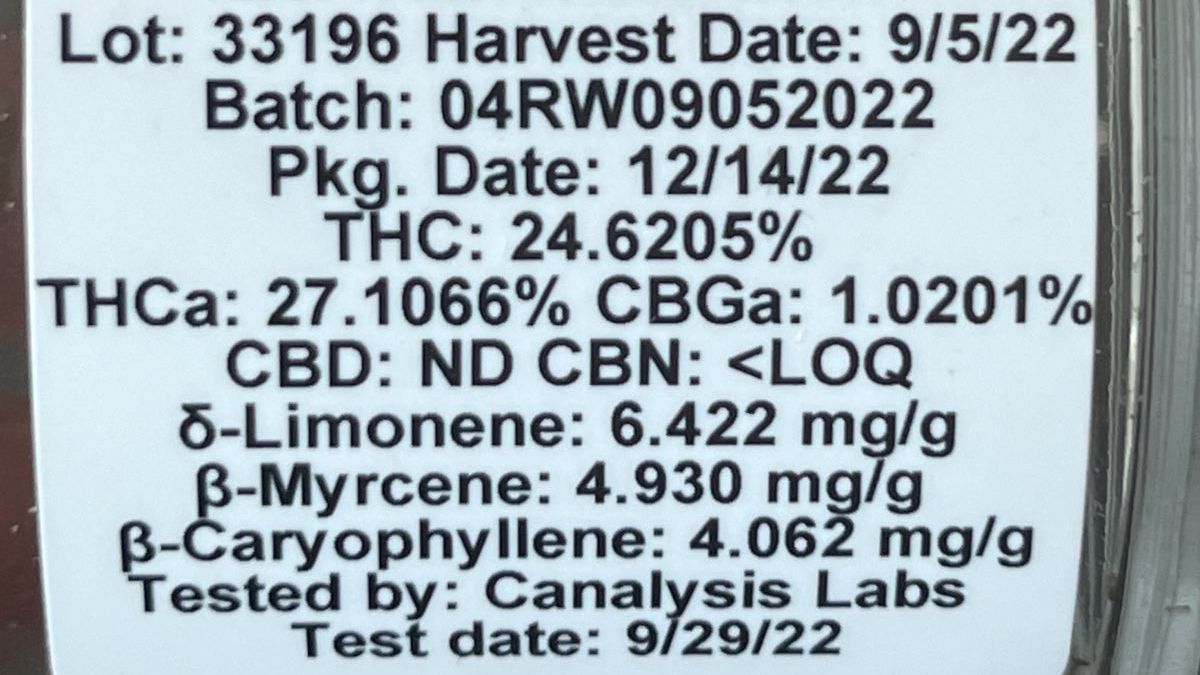White labeling is a growing part of the cannabis market. It happens when a licensed manufacturer produces cannabis products that are later sold under another brand’s name. This allows brands to bring items to market without running their own cultivation or processing facilities.
By contrast, vertically integrated brands grow, extract, and package their own products, often highlighting this control as part of their identity. For consumers, the key question becomes: how can I tell if my purchase is white labeled, and does it make a difference?
Signs a Product May Be White Labeled
There’s no single way to know, but several clues can help.
1. License Holder Name
Cannabis packaging usually lists the licensed entity responsible for the product. If that name differs from the brand on the front, the product may be outsourced. Some packages even display both a brand and manufacturer, which is a clear sign of white labeling.
2. Batch Numbers and QR Codes
Every product has a batch or lot number. Many states require scannable codes tied to track-and-trace systems. If looking up the code reveals another company’s name, that suggests third-party production.
3. Packaging Similarities
If multiple brands use jars, pouches, or labels that look almost identical—down to fonts, layouts, or cannabinoid breakdowns—it may mean they share the same producer.
4. Certificate of Analysis (COA)
A COA shows testing results for potency and safety. Look at the client or license information. If it doesn’t match the brand or seems overly generic, the product may be white labeled.
5. Budtender Knowledge
Dispensary staff often know which products are made in-house and which are contracted out. Asking respectfully can give you quick insight, especially with house brands.
6. Consistency and Innovation
Brands that handle their own production often experiment with new strains or seasonal products. If a brand never changes and seems formulaic, it could be relying on white-label services.
Do White-Labeled Products Differ in Quality?
The impact depends on who manufactures the product and how much oversight the brand has.
Potential drawbacks:
- Less direct control may cause inconsistent quality.
- Products can feel generic if several brands share the same recipes.
- A lack of transparency may frustrate shoppers who value authenticity.
Potential benefits:
- Many manufacturers maintain high safety and compliance standards.
- Lower costs for brands may lead to competitive pricing.
- State regulations still require testing for safety and potency.
- White labeling lets smaller brands scale quickly, creating more choice for consumers.
Why Shoppers Should Pay Attention
For customers, the bigger issue is trust. If a brand is open about its sourcing and maintains consistent quality, whether it is white labeled or not may not matter much. But knowing how to spot the difference empowers shoppers to make choices that match their priorities.
If you value uniqueness and transparency, look for vertically integrated brands that highlight cultivation or in-house processing. If you’re more focused on affordability or availability, well-made white-labeled products can still be a solid option.
Ultimately, the best strategy is to read labels carefully, check COAs, ask budtenders, and notice consistency over time. These habits give shoppers confidence in what they’re buying—whether boutique flower from a small grower or a large-scale product produced by a white-label partner.

